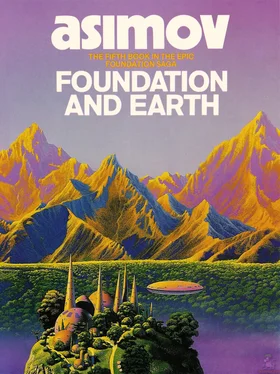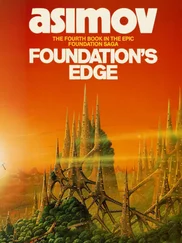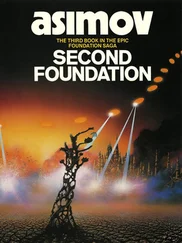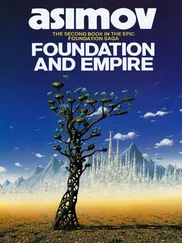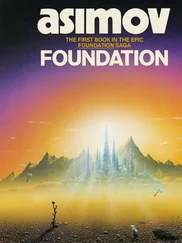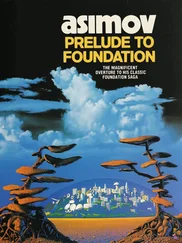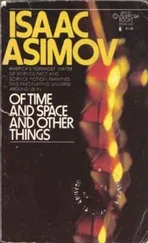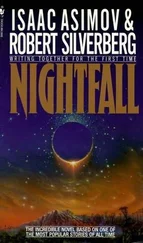“It occurred to a Livian historian, Humbal Yariff, that whatever the planet of origin, it would have settled worlds near itself sooner than it would settle planets farther away. In general, the farther a world from the point of origin the later it would have been settled.
“Suppose, then, one recorded the date of settlement of all habitable planets in the Galaxy, and made networks of all that were a given number of millennia old. There could be a network drawn through all planets ten thousand years old; another through those twelve thousand years old, still another through those fifteen thousand years old. Each network would, in theory, be roughly spherical and they should be roughly concentric. The older networks would form spheres smaller in radius than the younger ones, and if one worked out all the centers they should fall within a comparatively small volume of space that would include the planet of origin—Earth.”
Pelorat’s face was very earnest as he kept drawing spherical surfaces with his cupped hands. “Do you see my point, Golan?”
Trevize nodded. “Yes. But I take it that it didn’t work.”
“Theoretically, it should have, old fellow. One trouble was that times of origin were totally inaccurate. Every world exaggerated its own age to one degree or another and there was no easy way of determining age independently of legend.”
Bliss said, “Carbon-14 decay in ancient timber.”
“Certainly, dear,” said Pelorat, “but you would have had to get co-operation from the worlds in question, and that was never given. No world wanted its own exaggerated claim of age to be destroyed and the Empire was then in no position to override local objections in a matter so unimportant. It had other things on its mind.
“All that Yariff could do was to make use of worlds that were only two thousand years old at most, and whose founding had been meticulously recorded under reliable circumstances. There were few of those, and while they were distributed in roughly spherical symmetry, the center was relatively close to Trantor, the Imperial capital, because that was where the colonizing expeditions had originated for those relatively few worlds.
“That, of course, was another problem. Earth was not the only point of origin of settlement for other worlds. As time went on, the older worlds sent out settlement expeditions of their own, and at the time of the height of Empire, Trantor was a rather copious source of those. Yariff was, rather unfairly, laughed at and ridiculed and his professional reputation was destroyed.”
Trevize said, “I get the story, Janov. —Dr. Deniador, is there then nothing at all you could give me that represents the faintest possibility of hope? Is there any other world where it is conceivable there may be some information concerning Earth?”
Deniador sank into doubtful thought for a while. “We-e-ell,” he said at last, drawing out the word hesitantly, “as a Skeptic I must tell you that I’m not sure that Earth exists, or has ever existed. However—” He fell silent again.
Finally, Bliss said, “I think you’ve thought of something that might be important, Doctor.”
“Important? I doubt it,” said Deniador faintly. “Perhaps amusing, however. Earth is not the only planet whose position is a mystery. There are the worlds of the first group of Settlers; the Spacers, as they are called in our legends. Some call the planets they inhabited the ‘Spacer worlds’; others call them the ‘Forbidden Worlds.’ The latter name is now the usual one.
“In their pride and prime, the legend goes, the Spacers had lifetimes stretching out for centuries, and refused to allow our own short-lived ancestors to land on their worlds. After we had defeated them, the situation was reversed. We scorned to deal with them and left them to themselves, forbidding our own ships and Traders to deal with them. Hence those planets became the Forbidden Worlds. We were certain, so the legend states, that He Who Punishes would destroy them without our intervention, and, apparently, He did. At least, no Spacer has appeared in the Galaxy to our knowledge in many millennia.”
“Do you think that the Spacers would know about Earth?” said Trevize.
“Conceivably, since their worlds were older than any of ours. That is, if any Spacers exist, which is extremely unlikely.”
“Even if they don’t exist, their worlds do and may contain records.”
“If you can find the worlds.”
Trevize looked exasperated. “Do you mean to say that the key to Earth, the location of which is unknown, may be found on Spacer worlds, the location of which is also unknown?”
Deniador shrugged. “We have had no dealings with them for twenty thousand years. No thought of them. They, too, like Earth, have receded into the mists.”
“How many worlds did the Spacers live on?”
“The legends speak of fifty such worlds—a suspiciously round number. There were probably far fewer.”
“And you don’t know the location of a single one of the fifty?”
“Well, now, I wonder—”
“What do you wonder?”
Deniador said, “Since primeval history is my hobby, as it is Dr. Pelorat’s, I have occasionally explored old documents in search of anything that might refer to early time; something more than legends. Last year, I came upon the records of an old ship, records that were almost indecipherable. It dated back to the very old days when our world was not yet known as Comporellon. The name ‘Baleyworld’ was used, which, it seems to me, may be an even earlier form of the ‘Benbally world’ of our legends.”
Pelorat said, excitedly, “Have you published?”
“No,” said Deniador. “I do not wish to dive until I am sure there is water in the swimming pool, as the old saying has it. You see, the record says that the captain of the ship had visited a Spacer world and taken off with him a Spacer woman.”
Bliss said, “But you said that the Spacers did not allow visitors.”
“Exactly, and that is the reason I don’t publish the material. It sounds incredible. There are vague tales that could be interpreted as referring to the Spacers and to their conflict with the Settlers—our own ancestors. —Such tales exist not only on Comporellon but on many worlds in many variations, but all are in absolute accord in one respect. The two groups, Spacers and Settlers, did not mingle. There was no social contact, let alone sexual contact, and yet apparently the Settler captain and the Spacer woman were held together by bonds of love. This is so incredible that I see no chance of the story being accepted as anything but, at best, a piece of romantic historical fiction.”
Trevize looked disappointed. “Is that all?”
“No, Councilman, there is one more matter. I came across some figures in what was left of the log of the ship that might—or might not—represent spatial co-ordinates. If they were—and I repeat, since my Skeptic’s honor compels me to, that they might not be—then internal evidence made me conclude they were the spatial co-ordinates of three of the Spacer worlds. One of them might be the Spacer world where the captain landed and from which he withdrew his Spacer love.”
Trevize said, “Might it not be that even if the tale is fiction, the co-ordinates are real?”
“It might be,” said Deniador. “I will give you the figures, and you are free to use them, but you might get nowhere. —And yet I have an amusing notion.” His quick smile made its appearance.
“What is that?” said Trevize.
“What if one of those sets of co-ordinates represented Earth?”
Comporellon’s sun, distinctly orange, was larger in appearance than the sun of Terminus, but it was low in the sky and gave out little heat. The wind, fortunately light, touched Trevize’s cheek with icy fingers.
Читать дальше
